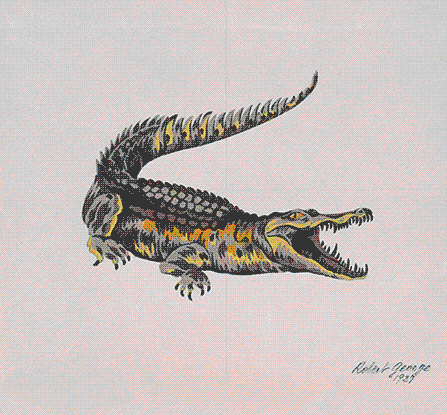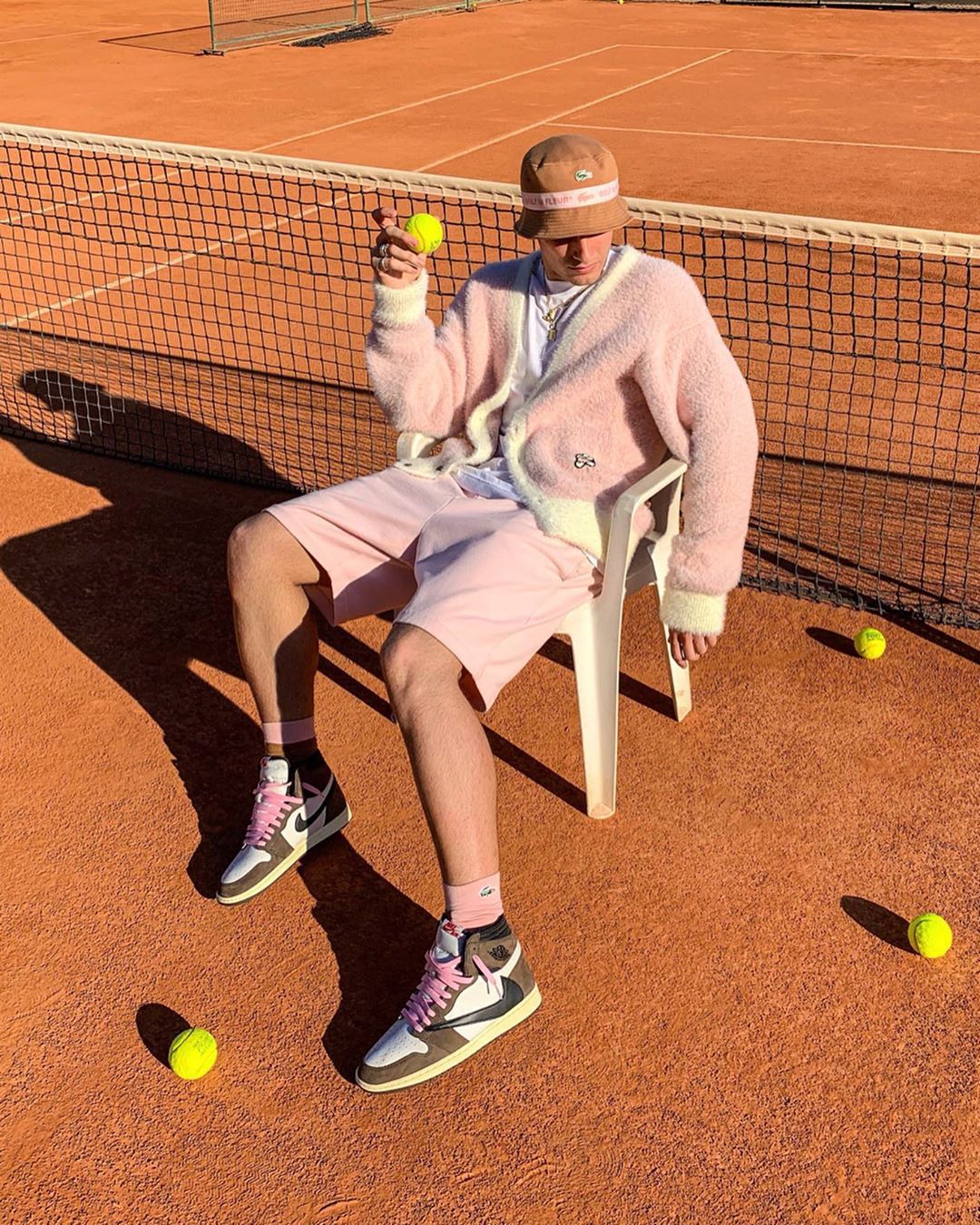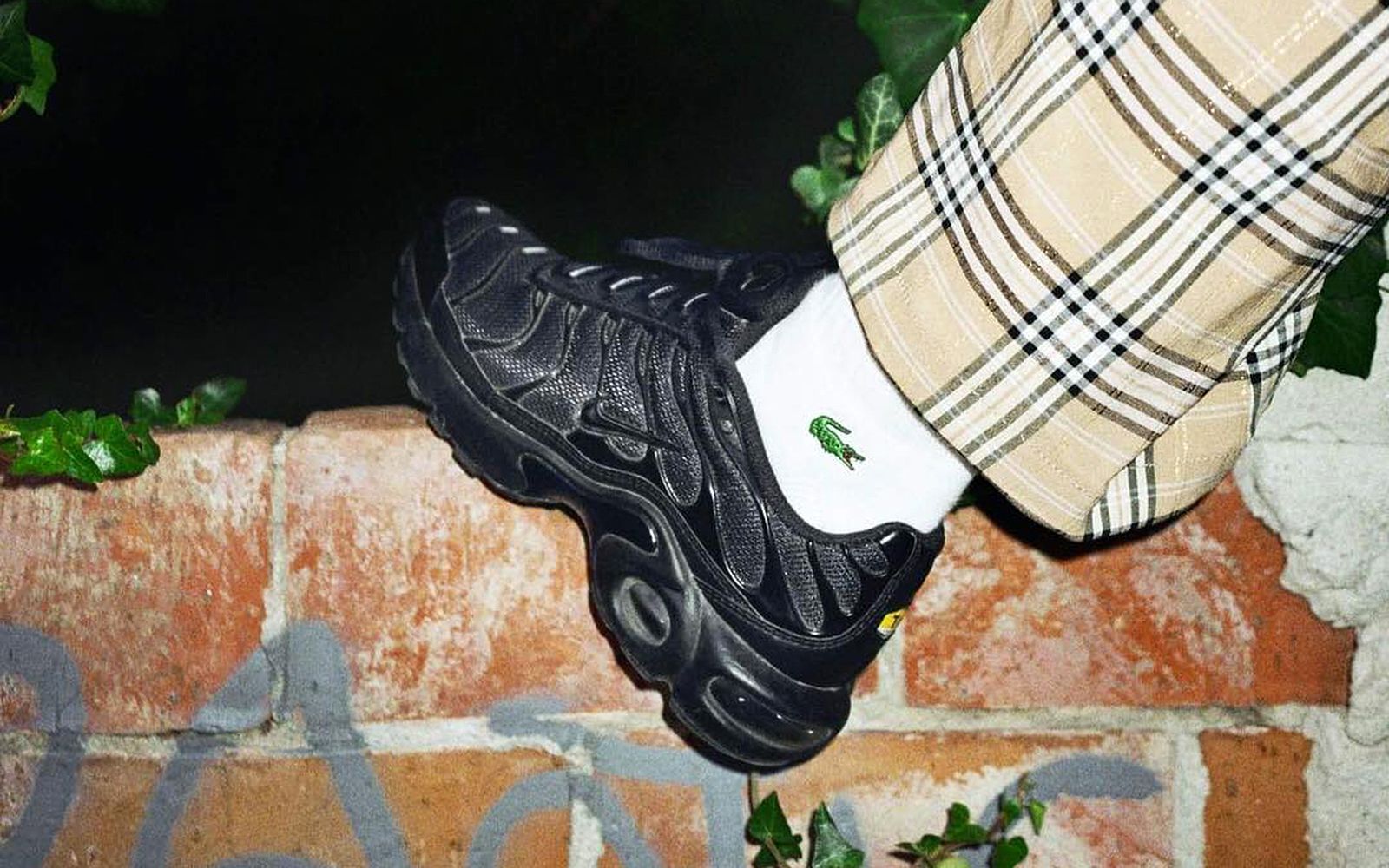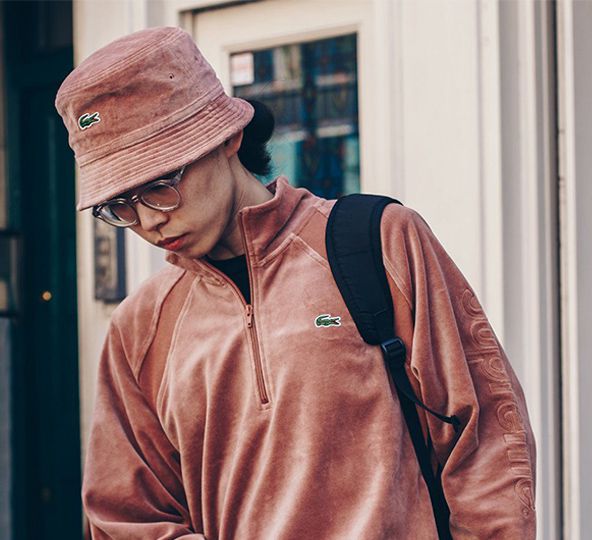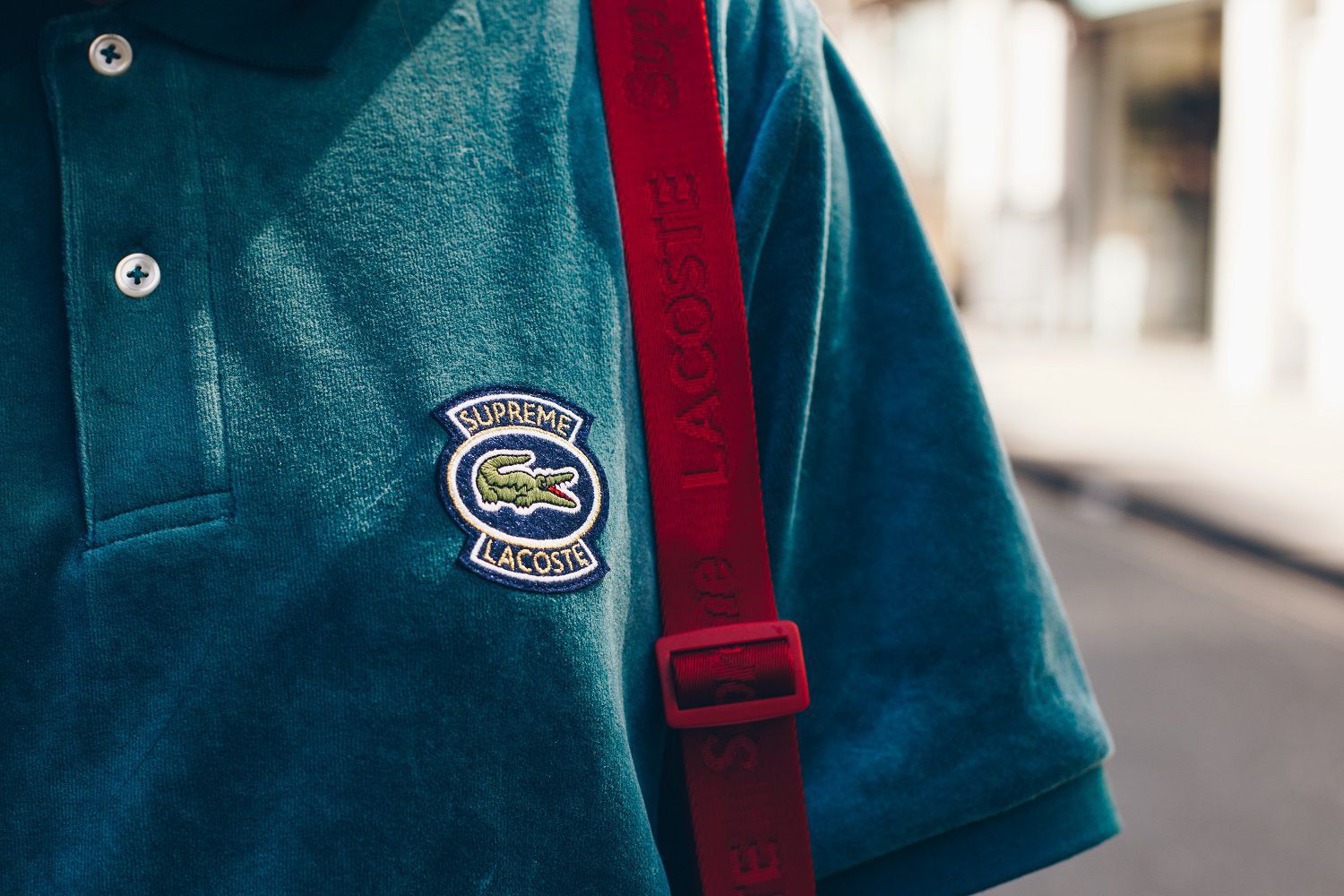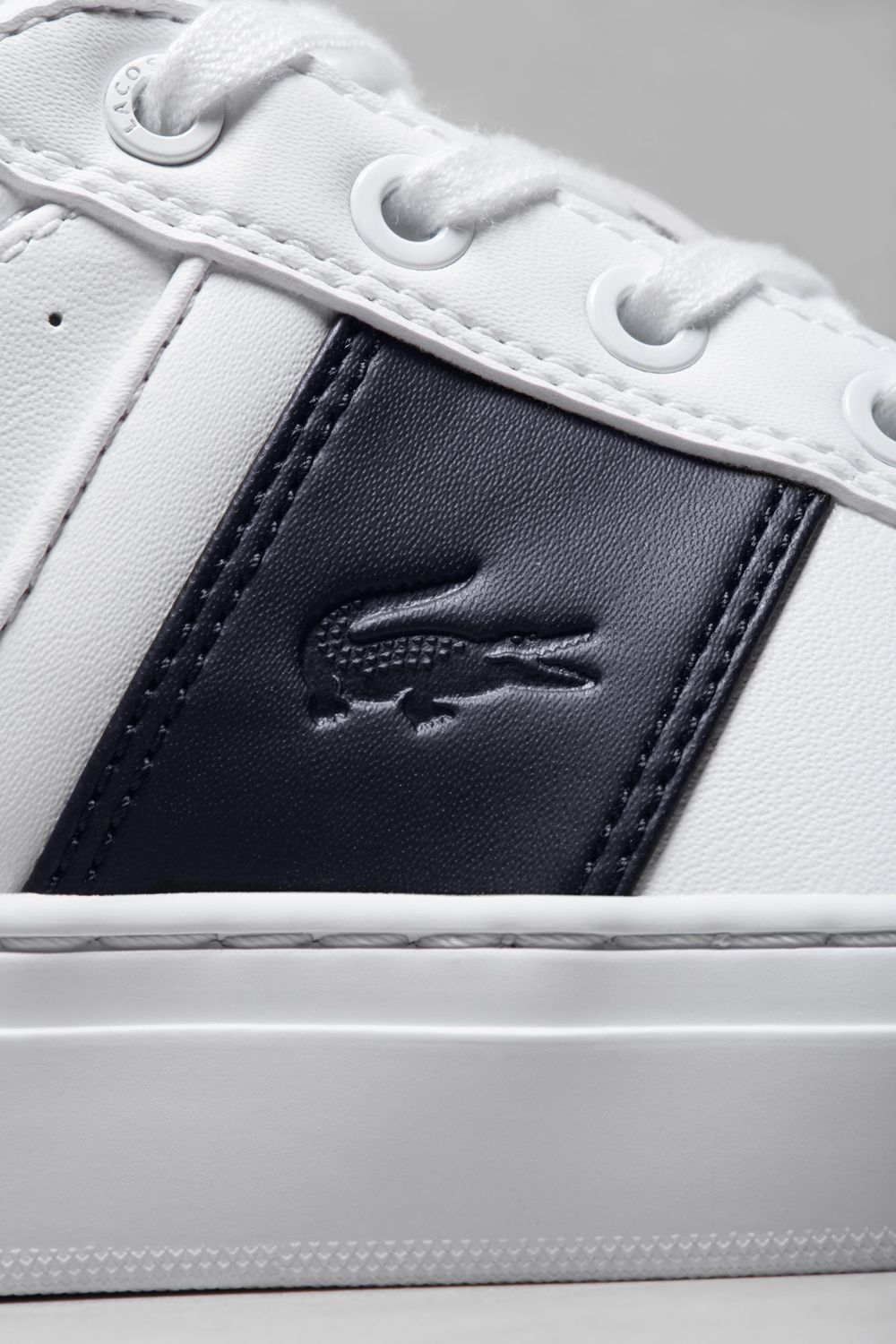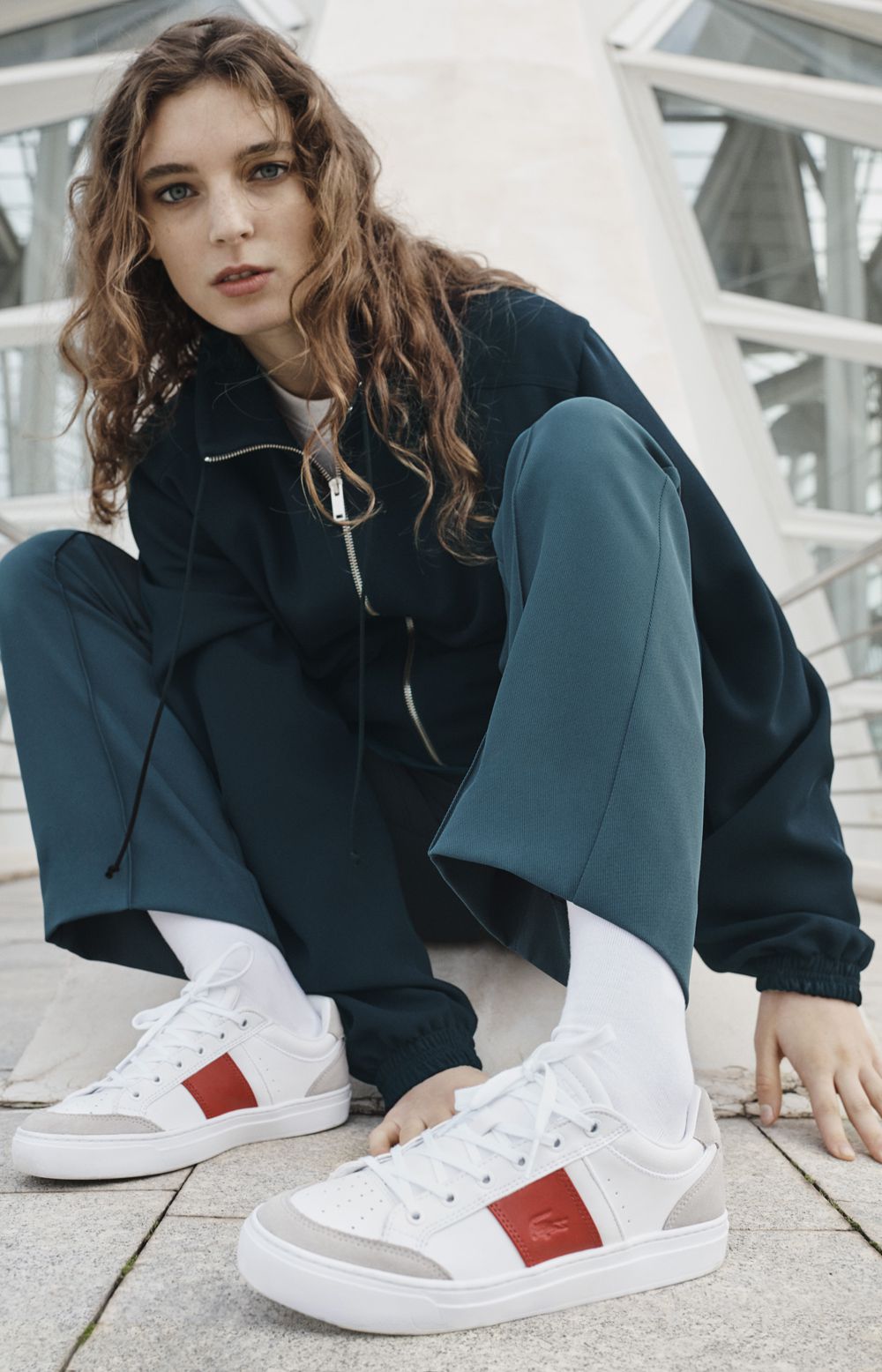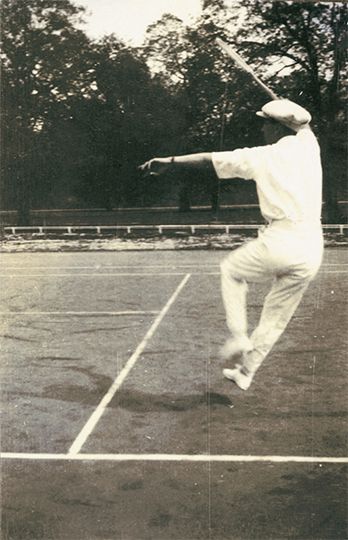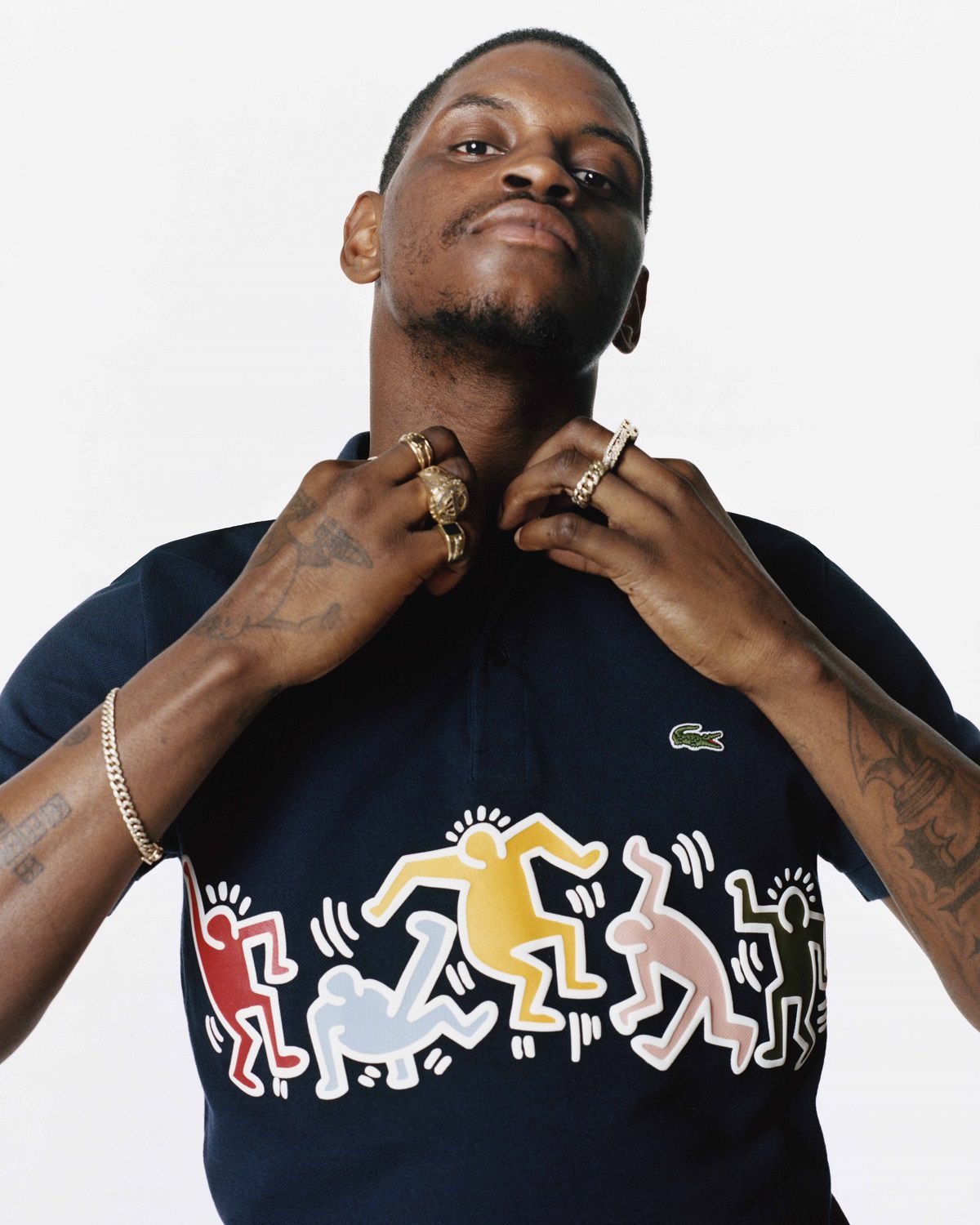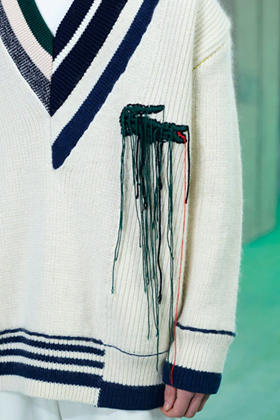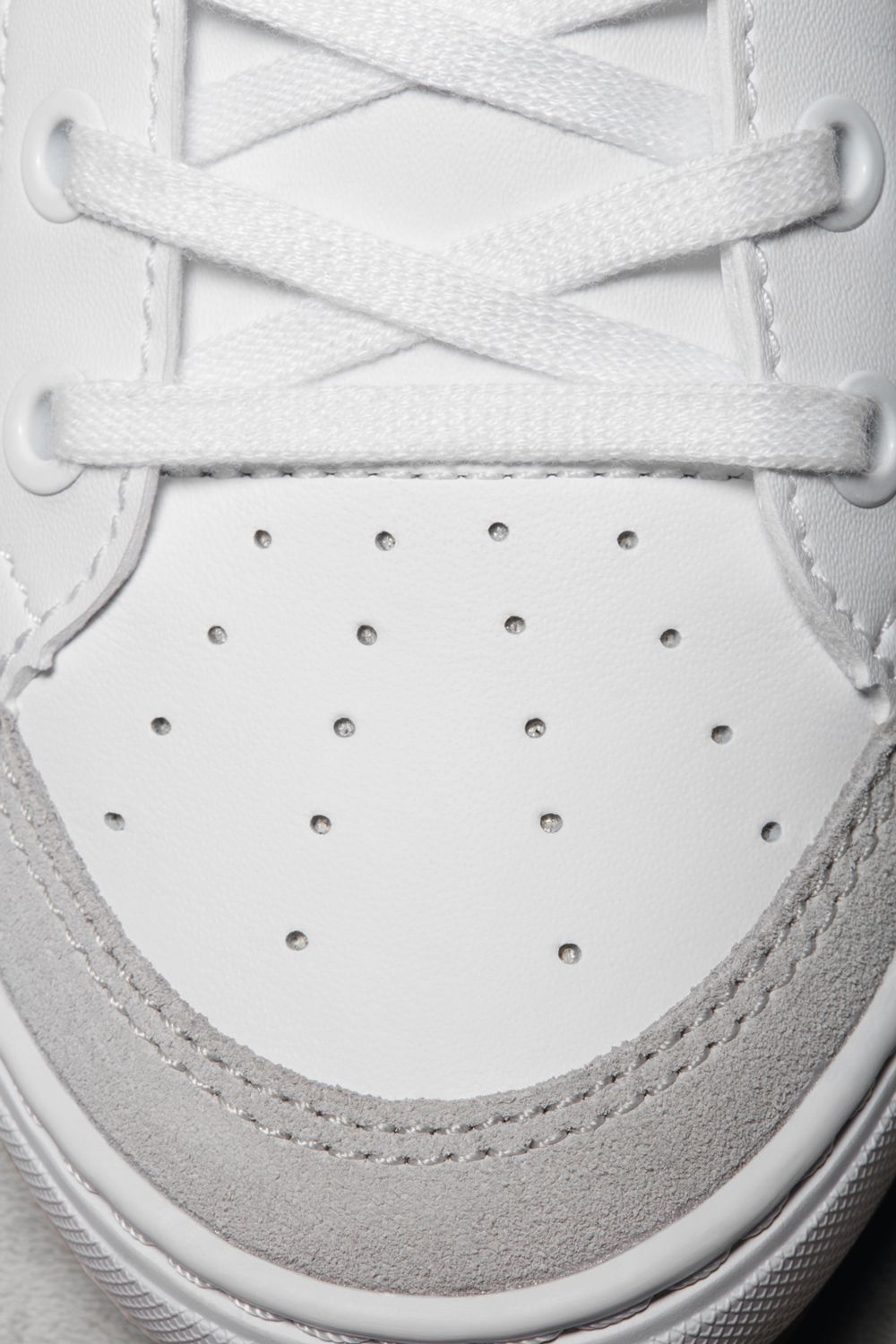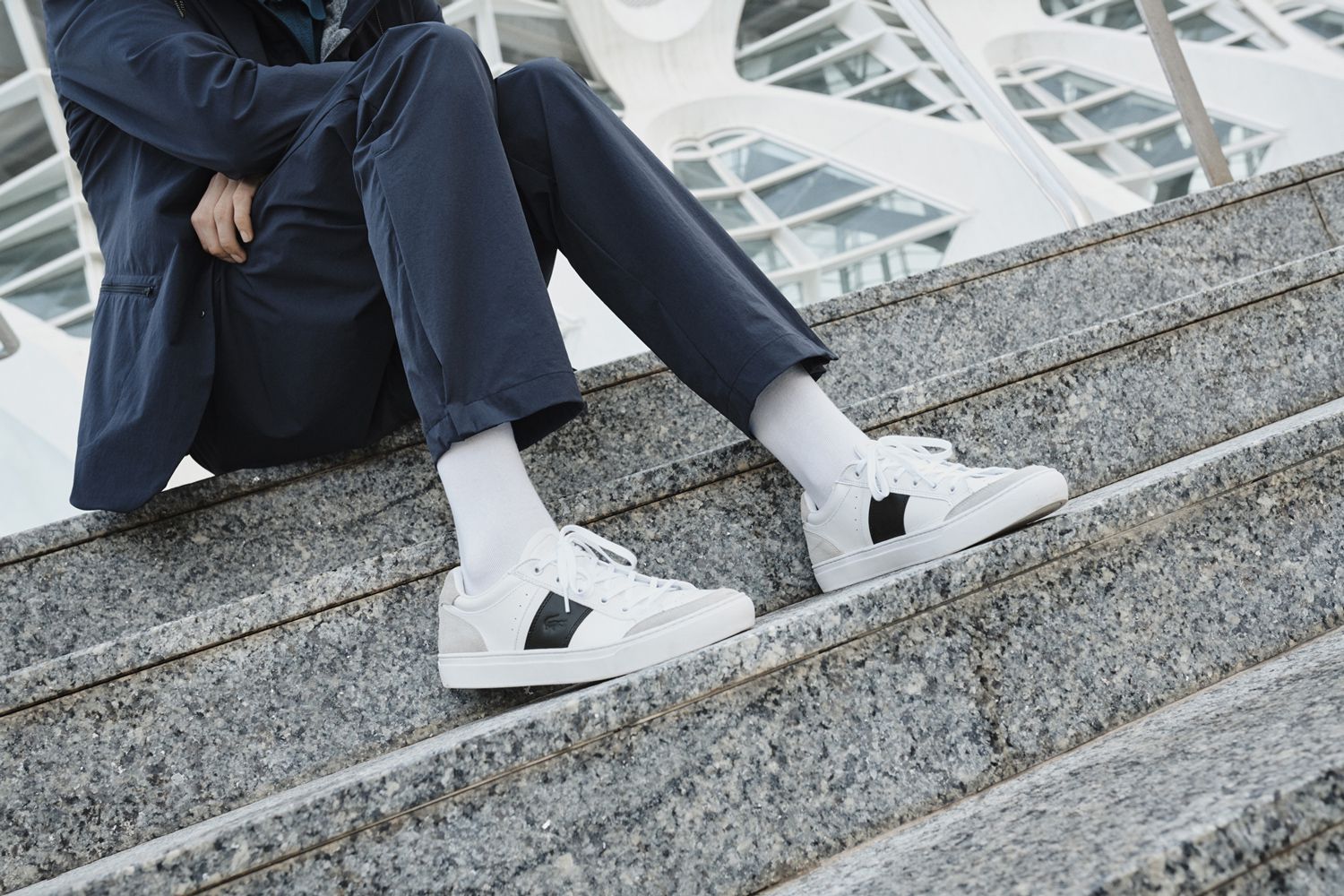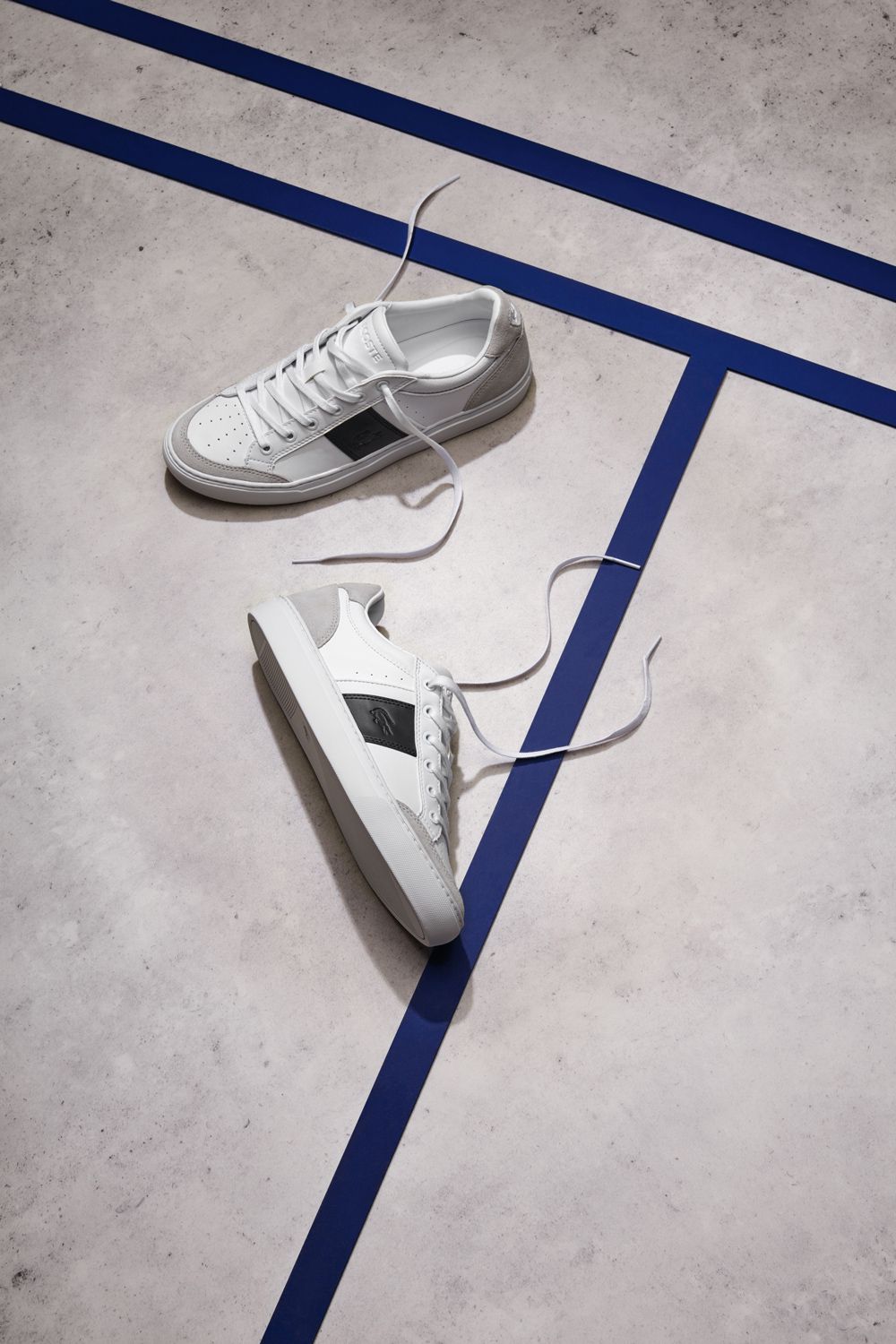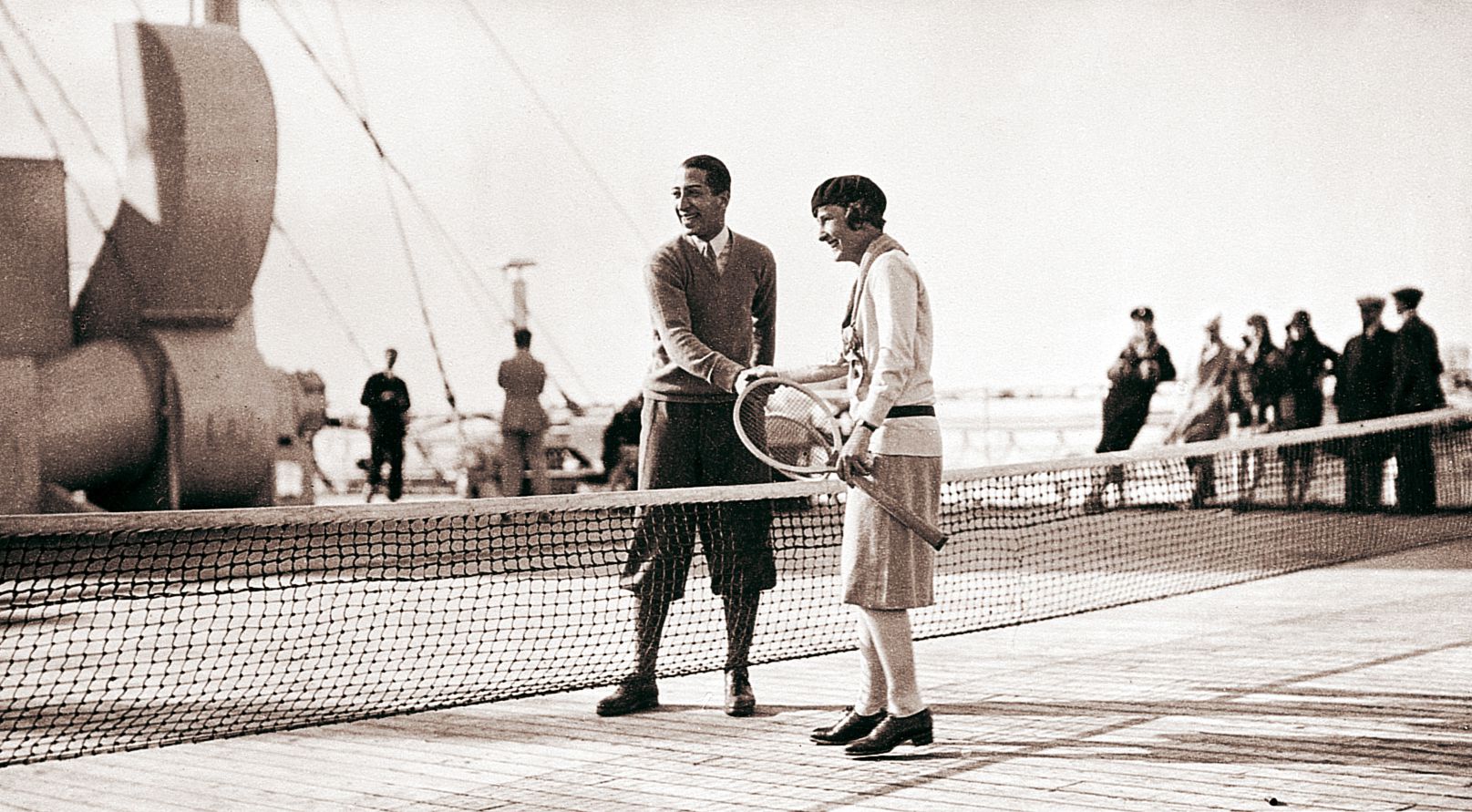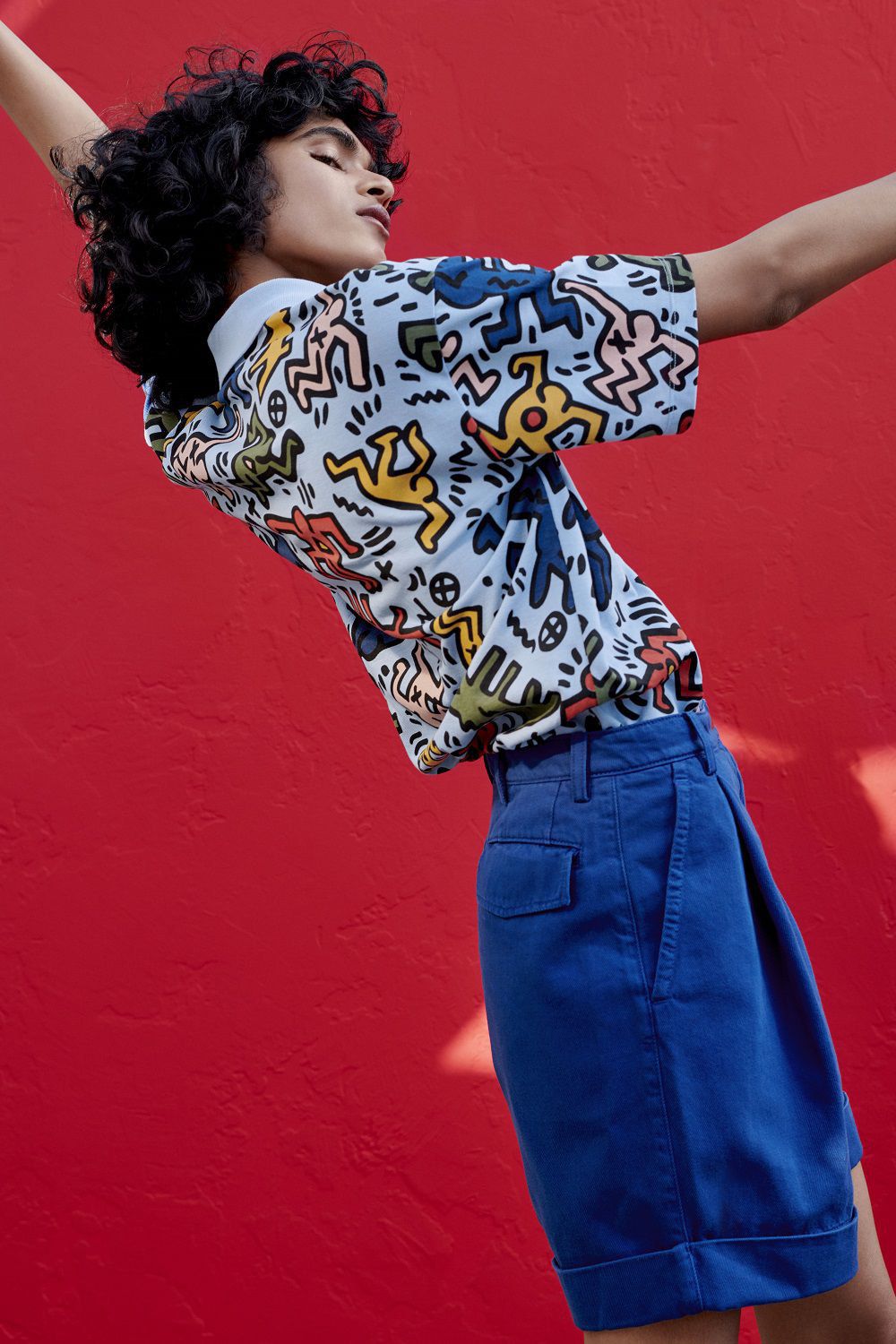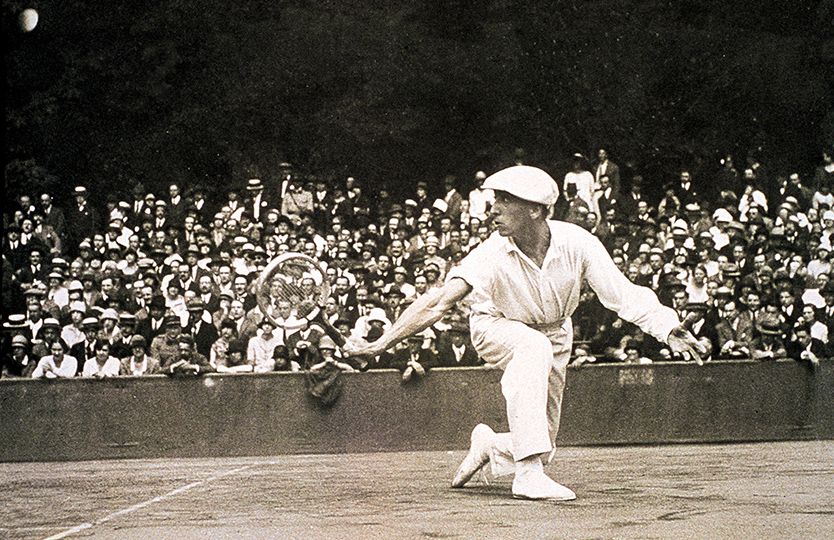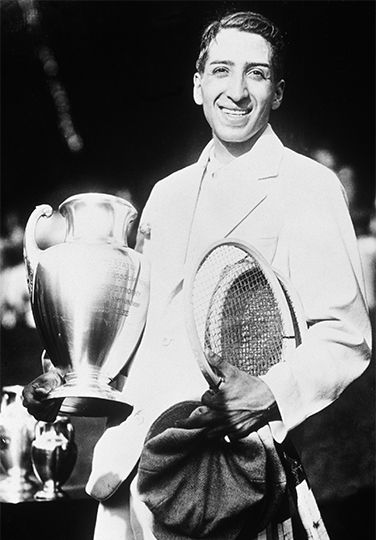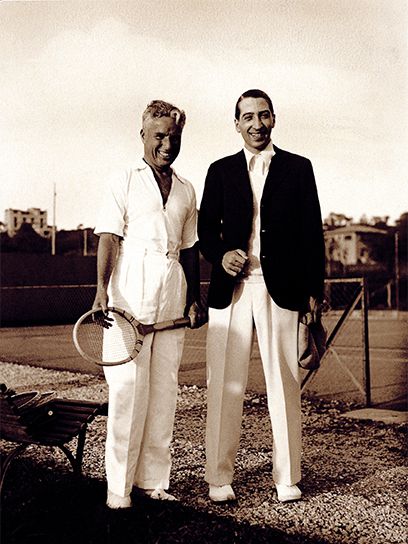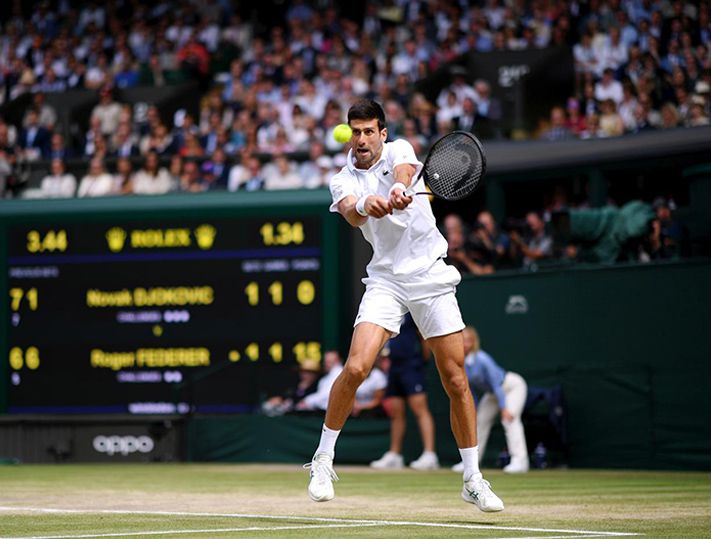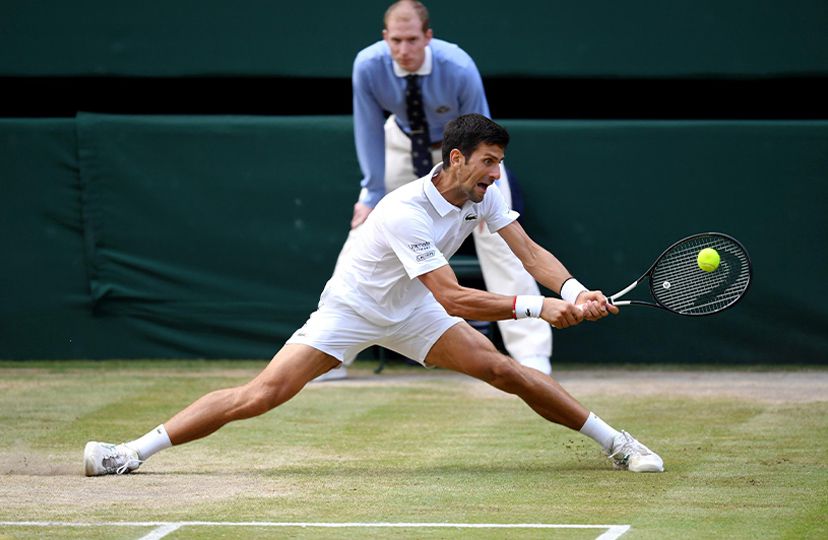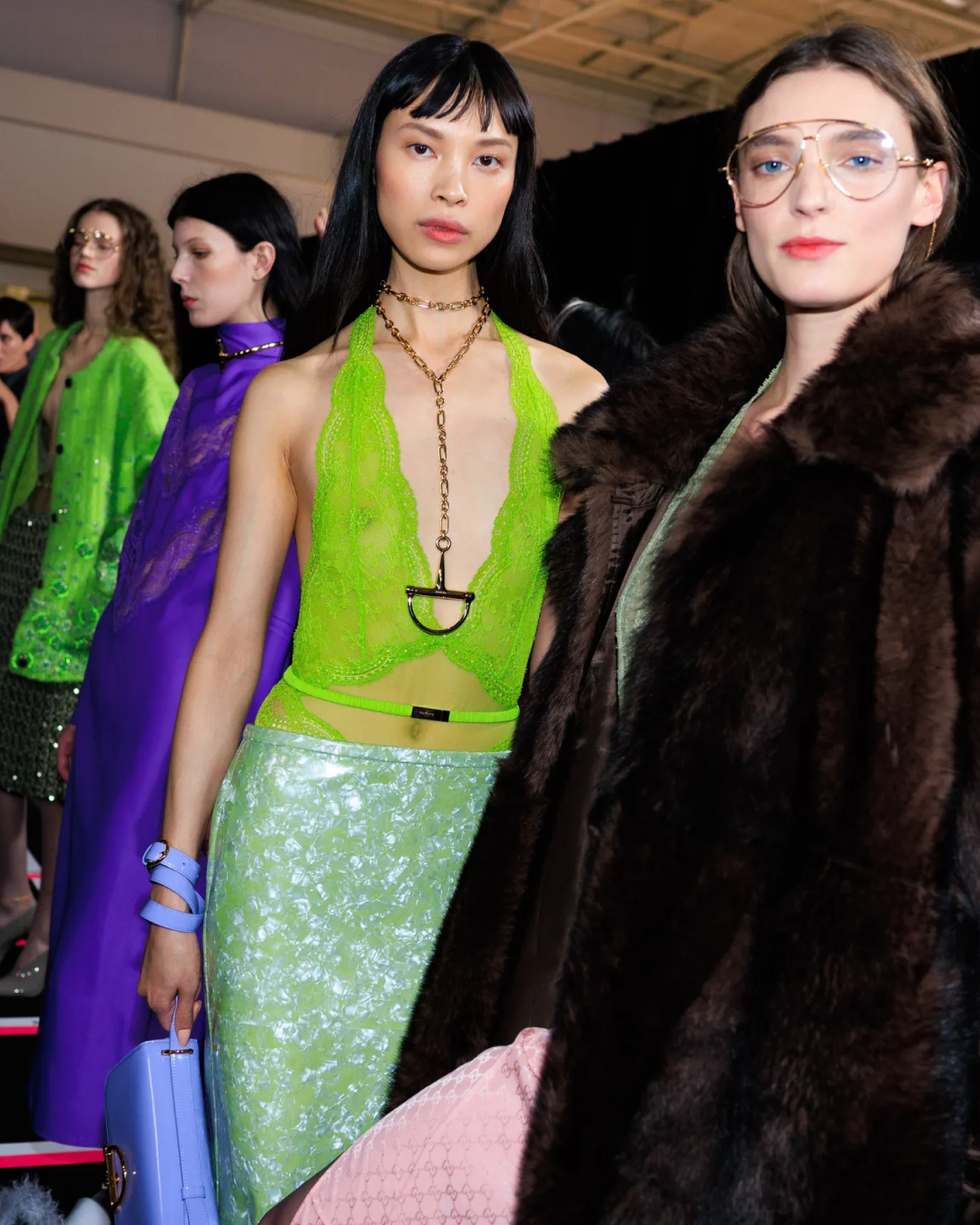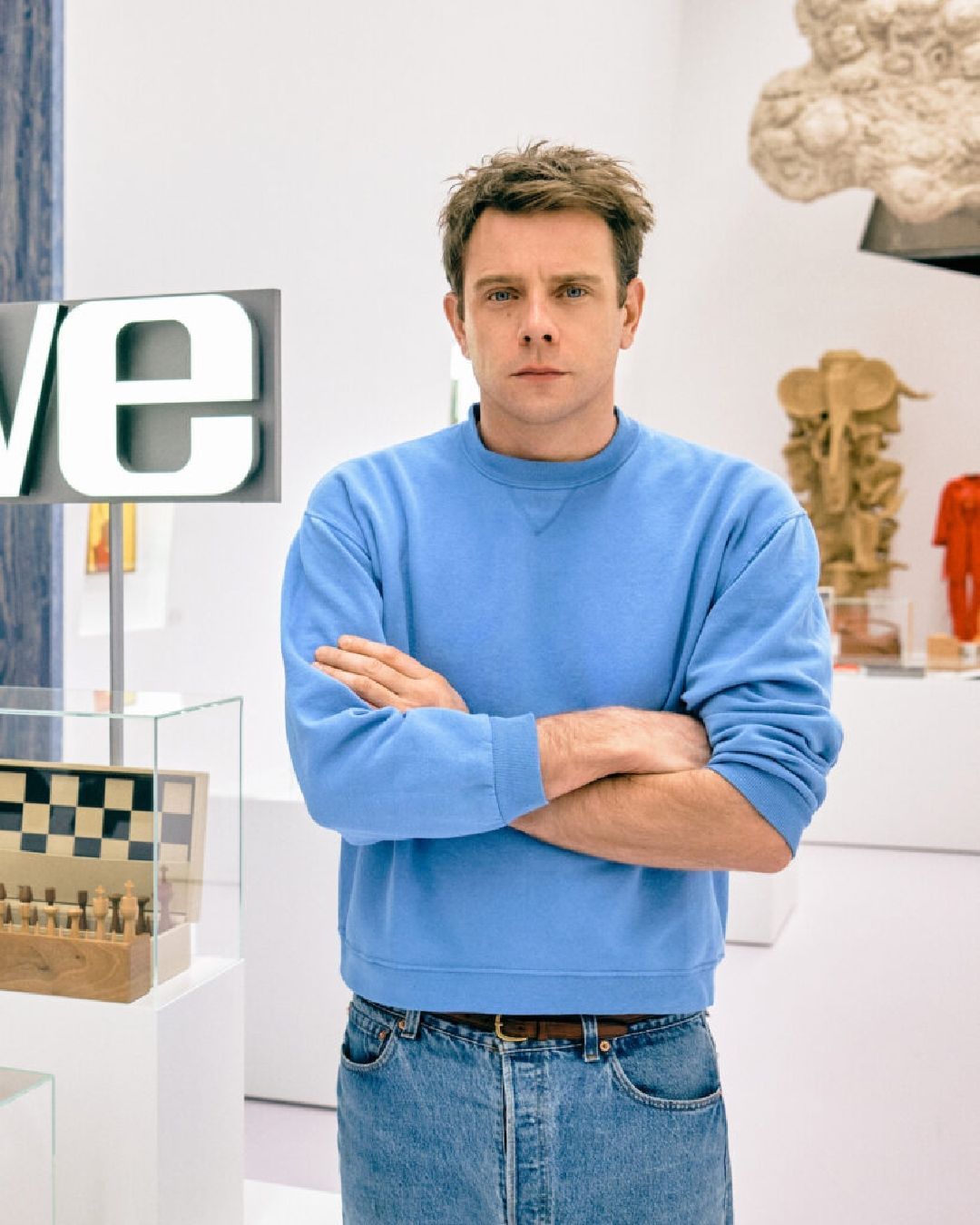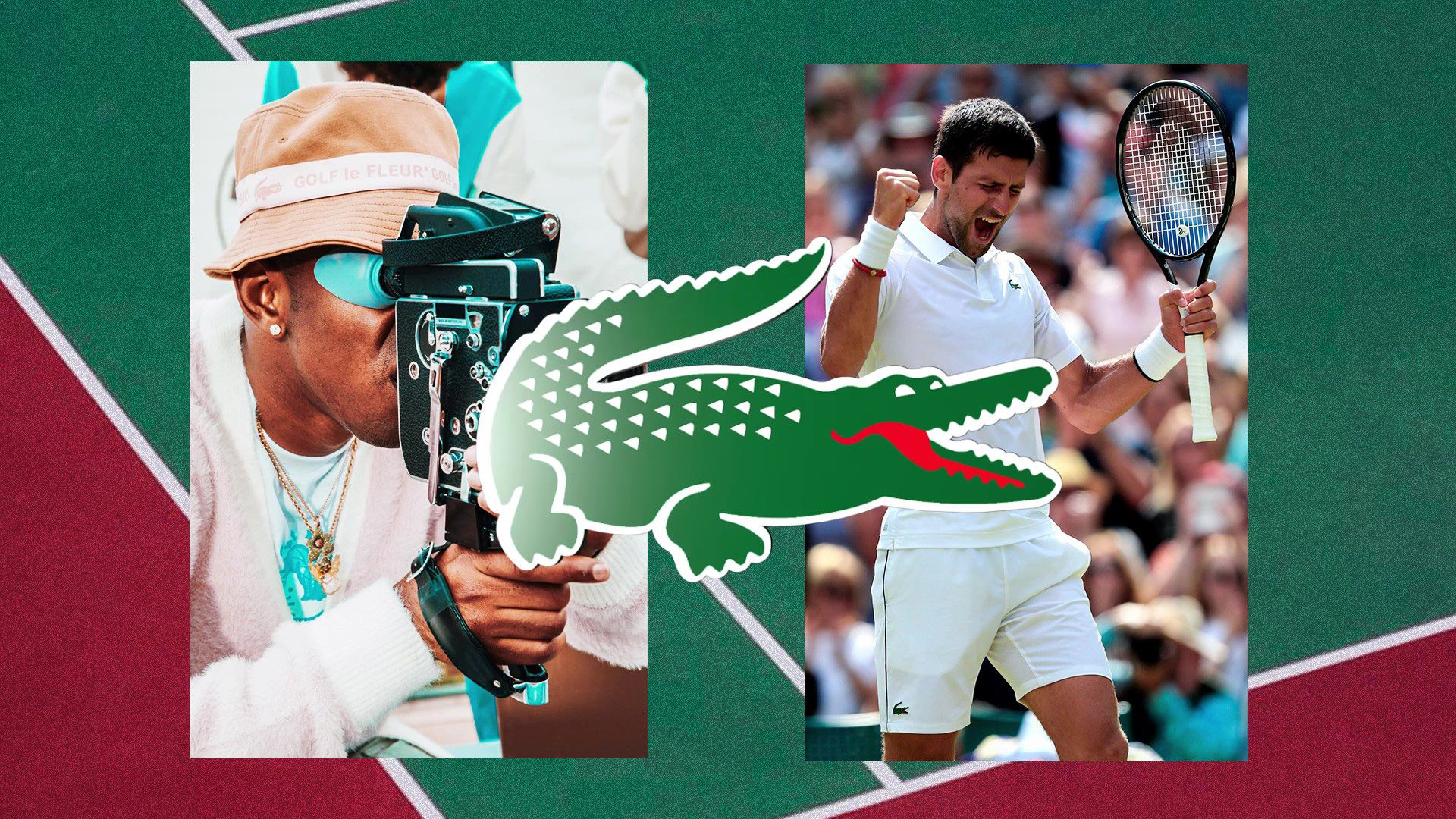
Lacoste: elegance beyond the court The legacy of a visionary who is changing streetwear
Lacoste: elegance beyond the court
The legacy of a visionary who is changing streetwear
Sunday, July 14th 2019, it's half-past seven in the evening at Wimbledon's Center Court, and none of the spectators of the most epic final to be, would bet a pound on Novak Djokovic's win. His opponent Roger Federer, 8-time Wimbledon champion, has 3 championship points and is serving for the twenty-first slam title of his career.
At this point, it feels like a Hollywood' screenwriter intervened: the Swiss loses his service, it goes 12 tie and after 5 hours Novak reconfirms himself as the champion of the tournament that leaves pounds of glory in the history of the sport. The Serbian does not celebrate but approaches the net with a light walk, like those made on the space station in the absence of gravity, and the smile of one who knew that the pound could have had another fate. Just over 1 million and 300 thousand spectators - the most- watched final ever in Italy - believe that they have seen unrepeatable event for tennis, but as a constant in the history of the sport, among the protagonists there is also the green Lacoste crocodile, embroidered on the chest of Novak Djokovic's bank polo.
Tennis players come and go, the styles of play change, trends and fashions alternate, but the crocodile stitched on the chest of the most famous tennis players stays iconic, and it stills transmits elegance to the movement even after 100 years, combining the technical and gestural act with a precise idea of shapes and beauty, so fascinating that it has exceeded 23.77 x 8.23 meters of the court.
René "the alligator"
Before being "just" an embroidered reptile on some garment, René Lacoste was a great tennis player - retired at only 25 years - who wore white suits and loafer. His strategic intelligence allowed him to overcome initial technical limits, leading him to win 10 Grand Slam tournaments and to one of the strongest Davis Cup teams ever. The value of Lacoste and the other 3 "musketeers", as the French team was called, was to have brought tennis from a semi-professional stage to consecration as a phenomenon of custom, which also lead to the birth of Roland Garros in France.
The initial history of the crocodile has reasons still far from an idea of a product destined for fashion. Walking in front of a showcase of a leather shop in Boston, in 1923, René challenged his teammate Pierre Gillou, betting with him a crocodile leather bag if the day after he would have won his match.
Despite the defeat, the American press reported this story the following day and the nickname “alligator” remained a distinctive character of Lacoste even in France, so much to involve Robert George in embroidering a crocodile on the blazer that René used to wear during the matches.
The crocodile symbol was created in a precise position, with the jaws wide open, not so common for an animal that most of the time tries to camouflage itself in absolute silence. The Lacoste crocodile expresses semiotically values of strength and determination, at the time associated with the founder, for his aggressive style of play transported then in the philosophy of the brand. In addition to this the choice of its creator Robert George, to use a subject which was recognizable for all, well-known, if not common, around the Champs Elysées. The brand in this way becomes more easily memorable and present as an independent subject, a co-star in all respects, first in tennis and in later years in marine sports and golf.
“Playing and winning are
not enough without elegance”
THE POLO SHIRT AS AN ICON
René Lacoste is part of that category of people for whom new challenges mean new solutions. The second moment in which the founder of the brand confirms to be one of the cornerstones of the phenomenon of “fashionization” of sport, coincides with the invention of a new item , which brings together practical needs with the indispensable elegance: the Polo shirt. 1927 U.S. Open, played in the hot August atmosphere of the West Side Tennis Club of Forest Hill (NY), inspired Lacoste to invent the short-sleeved polo, which replaced the heavy and inappropriate shirts and blazers, to support athletes' movements.
The Chemise made in Petit Piquè cotton thus inaugurates the phenomenon of functional elegance, as well as acting as a symbol synonymous with quality and resistance. The phenomenon expanded, also thanks to the consecration of tennis as a popular sport, and the polo shirts began to be produced and requested even off the court.
Over the years, the crocodile polo shirt will move from the tennis court to the street, becoming a symbol of social aspiration and status symbol destined to mark the Preppy, Yuppie and Paninari aesthetics.
L.12.12 became the polo par excellence, interpreted in the most classic colors starting from 1951 up to the striped variants and the typical 80s salmon and mint colorways. For years it will mark the beginning of that obsessive relationship with the brand, to show-off in the squares of big cities or to elevate one's image in the province. From the phenomenon of sport-elegance, the uniform of the '80s became an emblem, which changed the relationship of the younger generations with the fashion product. The parallel and similarities with what is happening today among hypebeasts confirm the cyclical nature of the fashion industry.
Precisely in 1983, in the wake of that enthusiasm, Lacoste created the first sneaker model, an item that thanks to its value allows the brand to get out of the purely sporting aspect and reposition itself in the market. That period represents a turning point in the common idea of perceiving the Lacoste brand, from that vitality, it continues to inspire new projects. An example is the latest Courtline sneaker model, which recovers the typical colors and silhouettes of the 80s, balancing the sporty touch and the streetwear currents with a new value of elegance, which René described:
“Elegance means adapting clothes to the situation,
to the circumstances (...) and make sure that the details remain discreet”
BACK TO THE STREETS
In the 1990s the Lacoste fashion development suffered a decline while maintaining credibility and respect in the tennis world. In recent years, the brand seems to have returned to the fray with new perspectives and ambitions, thanks above all to the new Creative Director Louise Trotter - the first woman to hold the position -, the "Queen of Clean" who presented her first collection during the Paris Fashion Week of last February. Louise Trotter is carrying out the difficult task of giving a new way of understanding the brand to the public, while keeping it familiar and faithful to what one would expect to find from the Lacoste collections.
From polo shirts to a focus on accessories and sneakers, Lacoste's projects signed in recent seasons are aimed at a new audience, which gives a nod to those social and cultural mechanisms that have allowed them to be broadcast on the streets in the 1980s. The capsule with Supreme is a clear symptom of a new wave of vitality, sharing the same visual strength of its symbols and the ability to be at first popularizers and finally represent an affectionate elite. Even the most recent drop in collaboration with Tyler The Creator tells a lot about the ability to innovate and preserve the heritage linked to tennis, which makes the crocodile a timeless symbol.
Lacoste is dialoguing differently with the market and online sales also show this: going from 2/3% in 2015 to 13% at the beginning of 2019. A new strategic vision is helping to confirm its founder's predisposition to observe reality analytically and extracting their primary needs, like when he invented the training machine designed and used by many generations of tennis players.
Also important in this new course is having regained the appeal of its fanbase, linked to the brand and educated also thanks to its parents, who in past years have lived different moments in the history of Lacoste. The new audience, which joins the one most attached to the clean and elegant values of the crocodile, feeds the discourse that links the brand to many youth subcultures and a casual underground scene, more widespread in England and France. The red thread that connects Lacoste to rebellion and freedom of expression for young people is not interrupted even today, an example in Italy is the trap song "Lacoste" published by Ketama 126 and Pretty Solero in 2017.
The admiration mixed with disappointment with which Roger Federer looks at his executioner in a white suit will long remain imprinted in the sporting memory of many enthusiasts. It is also certain that these images will not only tell about an event limited to tennis but will feed an aesthetic phenomenon that unties the normal relations of dependence between sport and fashion.
Virtually all the 15,000 at Center Court have cheered on Federer for 5 hours, without holding back the exultation and the goosebumps, but now in front of the new champion, who for the fifth time is raising the most important trophy in the circuit. The audience start a big applause, not only for fair-play, nothing has changed, Lacoste is still in the history of tennis, style, and elegance.











































